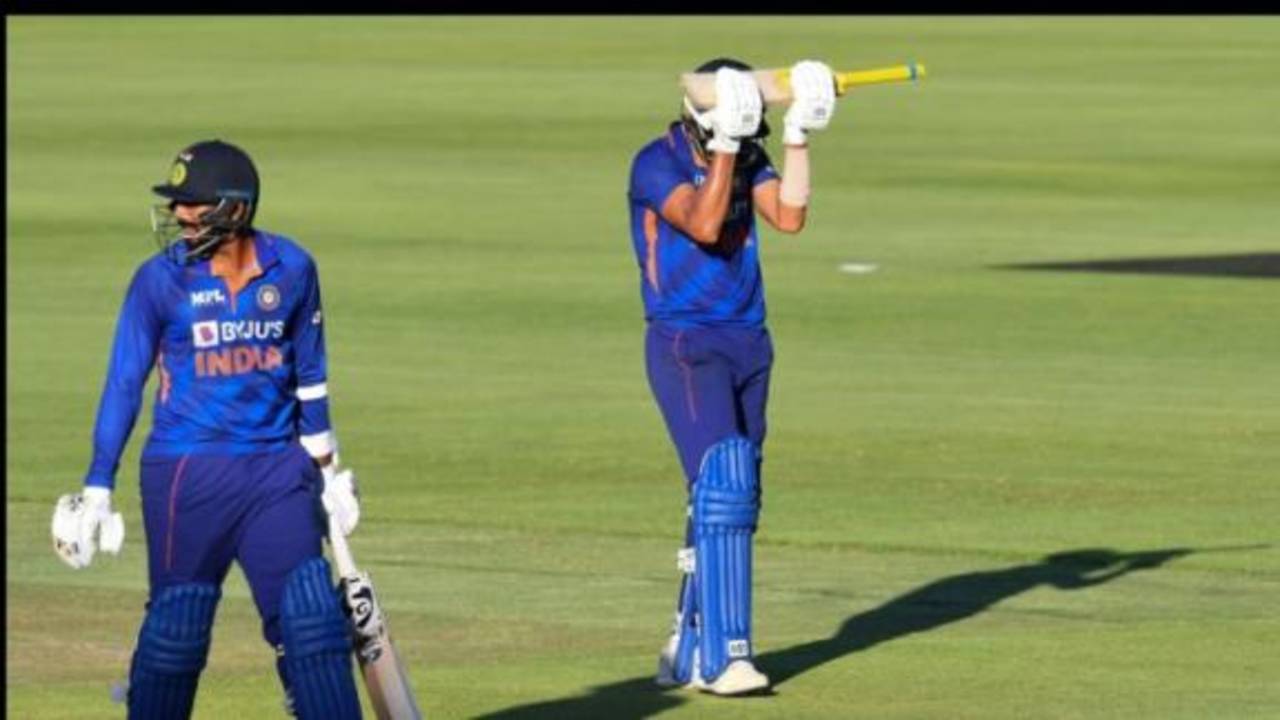India let down by shaky middle order and lack of wicket-takers
In the absence of Rohit, Hardik and Jadeja, India's long-standing problems were amplified in South Africa
Hemant Brar
24-Jan-2022
India went into the ODI series against South Africa with the mindset of starting to build the team for the 2023 World Cup. But not only did they lose the series 3-0, they are also probably no closer to finding solutions for what ails them in the format.
Over the last couple of years, India haven't had a wicket-taking threat in their bowling, their middle order hasn't come to the fore when needed, and they haven't had a regular sixth bowling option. All these issues haunted them in South Africa as well.
The wicket-taking threat issue is worth looking into a little deeper since it's an aspect that helped their ODI game between 2017-2019. Since the 2019 World Cup, though, they have the worst average and the worst economy in the powerplay.
One possible reason for that is Bhuvneshwar Kumar blowing hot and blowing cold in his appearances between injuries. The teams, meanwhile, have also found ways to negotiate Jasprit Bumrah without giving him wickets upfront.
The knock-on effect of not striking in the powerplay is that when the spinners come into the attack, there are usually two set batters in the middle. With Kuldeep Yadav losing his form and place, and Yuzvendra Chahal losing his novelty, India have struggled to pick up wickets in the middle overs as well.
R Ashwin made an ODI comeback in South Africa, after more than four years, but he didn't present the point of difference India might have been after.
India, however, did seem to show some awareness of the need to hit the wicket harder - something England and Australia tend to do for wickets in the middle overs - and went for the tallest bowler in Prasidh Krishna when it came to experimenting. They fared slightly better in the third ODI with change of personnel and strategy.
Deepak Chahar came in for Bhuvneshwar and struck early with the new ball. In the middle overs, the Indian seamers bowled much shorter lengths as compared to the first two ODIs. With the ball holding into the pitch, they picked two wickets with the short ball. It will be interesting to see in the coming ODIs if India are going to implement this strategy more consistently.
In the batting department, KL Rahul opened the innings in the absence of Rohit Sharma despite having achieved great success at No. 4 and 5 in the last two years. The move, though, opened up a middle-order slot and India tried Shreyas Iyer there.

Shreyas Iyer made scores of 17, 11 and 26 in the three ODIs•AFP/Getty Images
Shreyas batted at No. 5 in all three ODIs and on each occasion had the time to build his innings. India would have hoped for better than the scores of 17, 11 and 26, especially in the first and the third match when they needed him to steer the chase. Dravid said after the series that if the players were being given an extended run, he expected "really big performances" from them. Shreyas failed in that aspect.
As far as Rishabh Pant is concerned, his 85 off 71 balls in the second ODI was arguably the best knock by an Indian in the series. With India having lost Shikhar Dhawan and Virat Kohli in quick succession, Pant presented a rare case of rebuilding an innings at a strike rate of almost 120.
Once Rohit returns, Rahul can move down the order, lending the middle order a bit more experience and stability. Once he and Pant get together there, they promise a solution.
Another long-standing issue is that India's batters don't bowl, and their bowlers cannot be relied on for runs. During this series, Shardul Thakur and Chahar showed promise with the bat, but is Thakur a first-choice bowler or does he get in because he bats? Also, the first problem remains unsolved, and Hardik Pandya's lack of bowling fitness has a part to play in that.
In Pandya's absence, India tried Venkatesh Iyer as their sixth bowing option but didn't give him a single over in the first ODI. He bowled five in the second before being left out for the third.
India tried Shreyas as their sixth bowling option in the final ODI. He bowled legspin to right-handers and offspin to left-handers but lacked control. Still, it's an option that hasn't been explored so far and if Shreyas can work on his bowling, it could provide India some relief. But India will also be hoping for Pandya and Ravindra Jadeja to regain their fitness and form by the time the World Cup arrives.
So while you wouldn't want to read too much into one series where the team went in with the intention of trying out a few things and also had a couple of key players missing, Rohit and Dravid will know there is still quite a bit of work to do.
Hemant Brar is a sub-editor at ESPNcricinfo
